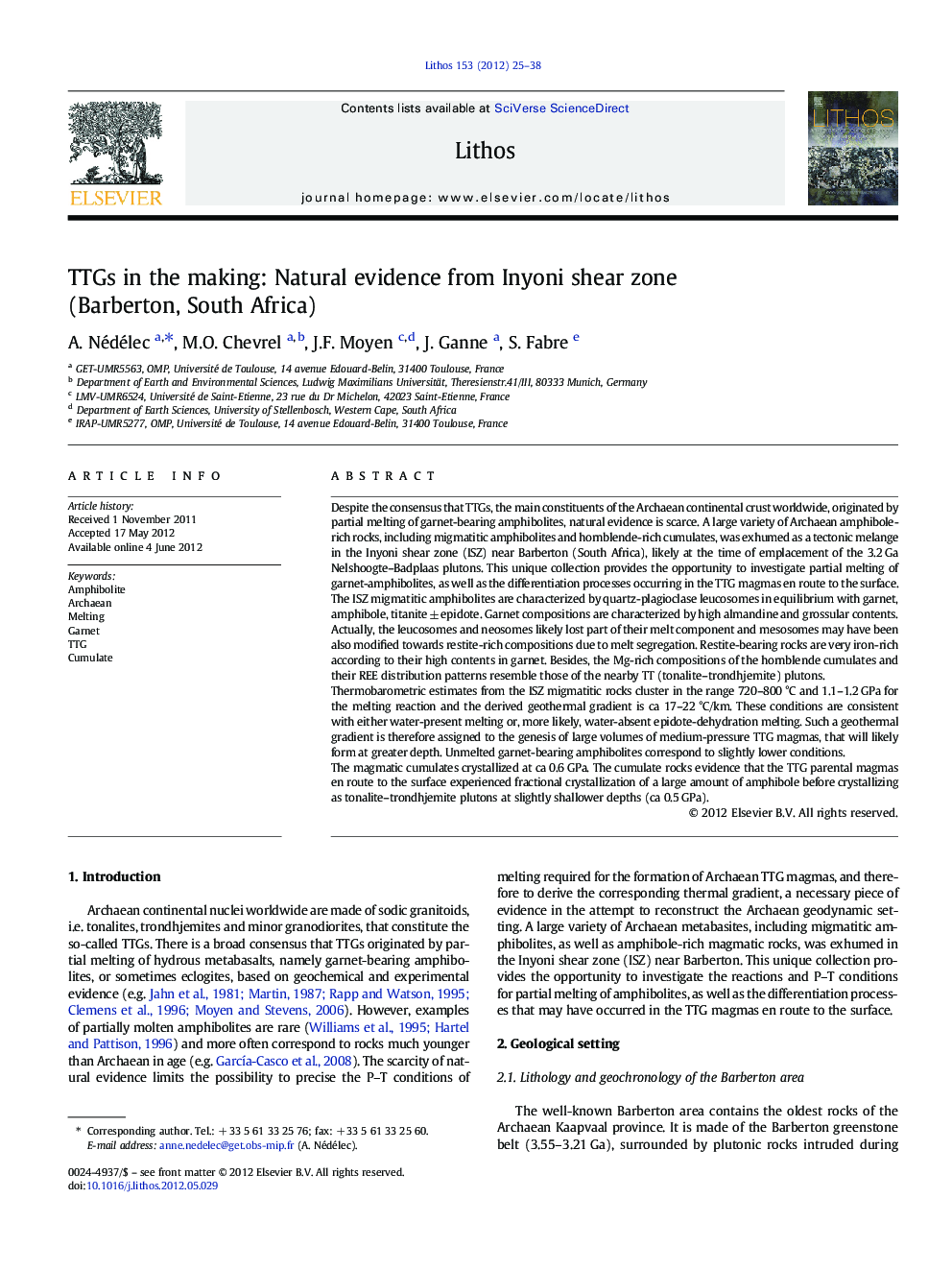| Article ID | Journal | Published Year | Pages | File Type |
|---|---|---|---|---|
| 4716426 | Lithos | 2012 | 14 Pages |
Despite the consensus that TTGs, the main constituents of the Archaean continental crust worldwide, originated by partial melting of garnet-bearing amphibolites, natural evidence is scarce. A large variety of Archaean amphibole-rich rocks, including migmatitic amphibolites and hornblende-rich cumulates, was exhumed as a tectonic melange in the Inyoni shear zone (ISZ) near Barberton (South Africa), likely at the time of emplacement of the 3.2 Ga Nelshoogte–Badplaas plutons. This unique collection provides the opportunity to investigate partial melting of garnet-amphibolites, as well as the differentiation processes occurring in the TTG magmas en route to the surface.The ISZ migmatitic amphibolites are characterized by quartz-plagioclase leucosomes in equilibrium with garnet, amphibole, titanite ± epidote. Garnet compositions are characterized by high almandine and grossular contents. Actually, the leucosomes and neosomes likely lost part of their melt component and mesosomes may have been also modified towards restite-rich compositions due to melt segregation. Restite-bearing rocks are very iron-rich according to their high contents in garnet. Besides, the Mg-rich compositions of the hornblende cumulates and their REE distribution patterns resemble those of the nearby TT (tonalite–trondhjemite) plutons.Thermobarometric estimates from the ISZ migmatitic rocks cluster in the range 720–800 °C and 1.1–1.2 GPa for the melting reaction and the derived geothermal gradient is ca 17–22 °C/km. These conditions are consistent with either water-present melting or, more likely, water-absent epidote-dehydration melting. Such a geothermal gradient is therefore assigned to the genesis of large volumes of medium-pressure TTG magmas, that will likely form at greater depth. Unmelted garnet-bearing amphibolites correspond to slightly lower conditions.The magmatic cumulates crystallized at ca 0.6 GPa. The cumulate rocks evidence that the TTG parental magmas en route to the surface experienced fractional crystallization of a large amount of amphibole before crystallizing as tonalite–trondhjemite plutons at slightly shallower depths (ca 0.5 GPa).
Graphical abstractFigure optionsDownload full-size imageDownload as PowerPoint slideHighlights► Migmatitic amphibolites from Barberton experienced epidote-out dehydration melting. ► The derived geothermal gradient is ca 20 °C/km. ► Hornblende-rich cumulates correspond to fractional crystallization of TTG magmas.
